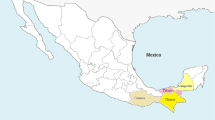Summary
Haematology parameters were measured in buffalo, Bali, Madura, Ongole and Grati (Friesian cross) bulls fed on either a high concentrate or a high roughage-based diet. Animals fed the high concentrate diet had the higher packed cell volumes and haemoglobin concentrations but lower red blood cell and white blood cell counts. Species differences were significant for all blood parameters measured, except red blood cell count. The buffalo and Bali had the highest packed cell volumes, haemoglobin concentrations and white blood cell counts followed by the Madura, Ongole and Grati bulls. When growth rate and feed efficiency were related to liveweight and blood values, only haemoglobin concentration and red blood cell count had significant partial regression coefficients. Within breed or species blood and performance parameters were significantly related only for buffalo and Madura bulls.
Résumé
Les paramètres hématologiques ont été mesurés chez des buffles, des taureaux Bali, Madura, Ongole et Grati (croisement Frison) nourris avec des rations riches en concentrés ou des rations riches en fourrages grossiers. Les animaux nourris avec les rations riches en concentré avaient le culot globulaire le important et les concentrations d'hémoglobineles plus élevées mais les numérations d'hématies et de leucocytes les plus faibles. Les différences entre les espèces étaient significatives en ce qui concerne tous les paramètres sanguins mesurés, sauf en ce qui concerne le nombre d'hématies. Le buffle et le Bali avaient les culots globulaires les plus importants ainsi que les concentrations d'hémoglobine et les numérations leucocytaires les plus élevées, suivis par les taureaux Madura, Ongole et Grati. Lorsque le taux de croissance et l'efficacité alimentaire étaient mis en rapport avec le poids vif et les variables sanguines, seules la concentration d'hémoglobine et la numération des hématies avaient des coefficients de régression partielle significatifs. Dans une race ou une espèce les paramètres sanguins et zootechniques étaient en rapport significatif seulement chez le buffle et les taureaux Madura.
Resumen
Se establecieron parámetros hematolólicos en búfalos y toros Balí, Madura, Ongole y Gratí (cruce de Friesian), alimentados con concentrado y/o con dietas básicas altas en fibra. Los animales alimentados con concentrado tuvieron el PCV y hemoglobina más altos, y bajos niveles de glóbulos rojos y blancos. Las diferencias entre especies fueron significativas para todos los parámetros medidos, excepto en el número de glóbulos rojos. Los búfalos y toros Balí tuvieron el más alto PCV, concentración de hemoglobina y células blancas, seguidos de los toros Madura, Ongole y Gratí. Cuando se relacionó la tasa de crecimiento y la conversión alimenticia con el peso vivo y los valores sanguíneos, solamente los valores de hemoglobina y el número de glóbulos rojos tuvieron coeficientes parciales de regresión significativos. Entre razas o especies los parámetros sanguíneos y de eficiencia se relacionaron significativamente, únicamente en búfalos y toros Madura.
Similar content being viewed by others
References
Amakiri, S. F., Ngere, L. O., Olusanya, S. K. &Ikede, B. O. (1979).Tropical Animal Health and Production,11, 106.
Bhannasiri, T., Bogart, R. &Krueger, H. (1961).Journal of Animal Science,20, 18.
Evans, J. V. &Turner, H. G. (1965).Australian Journal of Biological Sciences,18, 124.
Gutierrez, De La, J. H., Warnick, A. C., Cowley, J. J. &Hentges, J. F. (1971).Journal of Animal Science,32, 968.
Heyns, H. (1971).Journal of Agricultural Science, Cambridge,76, 563.
Howes, J. R., Shirley, R. L. &Hentges, J. F. (1963).Journal of Animal Science,22, 582.
Kirk, W. G. &Davis, G. K. (1970).Journal of Range Management,23, 239.
Moran, J. B. (1982). The performance of Indonesian beef breeds under traditional and improved management systems. Animal Production and Health in the Tropics. Penerbit Universiti, Pertanian, Malaysia, pp. 347–351.
Mullick, D. N. (1960).Journal of Agricultural Science, Cambridge,54, 391.
Olbrich, S. E., Martz, F. A., Tumbleson, M. E., Johnson, H. D. &Hilderbrand, E. S. (1971).Journal of Animal Science,33, 655.
Payne, W. J. A. (1970).Cattle Production in the Tropics, Vol. 1, Longmans, London, p. 116.
Shafie, M. M. &Badreldin, A. L. (1962).Journal of Animal Production, UAR,2, 61.
Shebaita, M. K. &Kamal, T. B. (1975).World Review of Animal Production,11, 50.
Author information
Authors and Affiliations
Rights and permissions
About this article
Cite this article
Thahar, A., Moran, J.B. & Wood, J.T. Haematology of indonesian large ruminants. Trop Anim Health Prod 15, 76–82 (1983). https://doi.org/10.1007/BF02239799
Accepted:
Issue Date:
DOI: https://doi.org/10.1007/BF02239799



